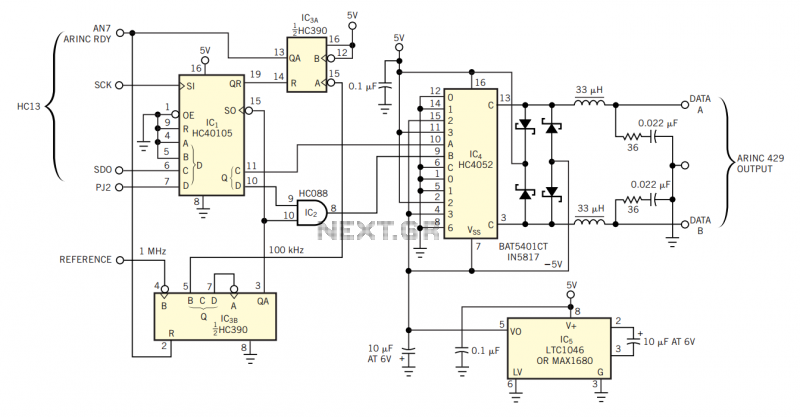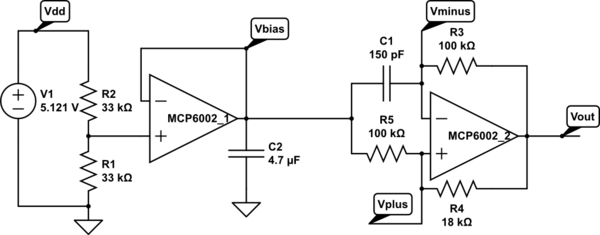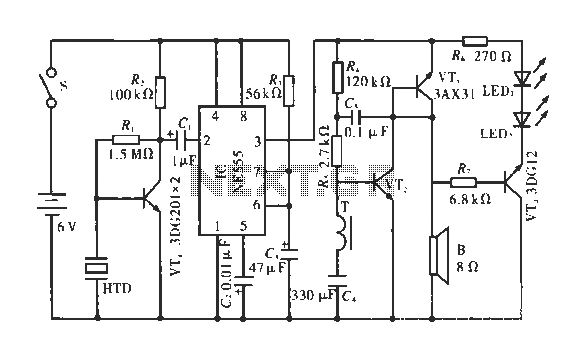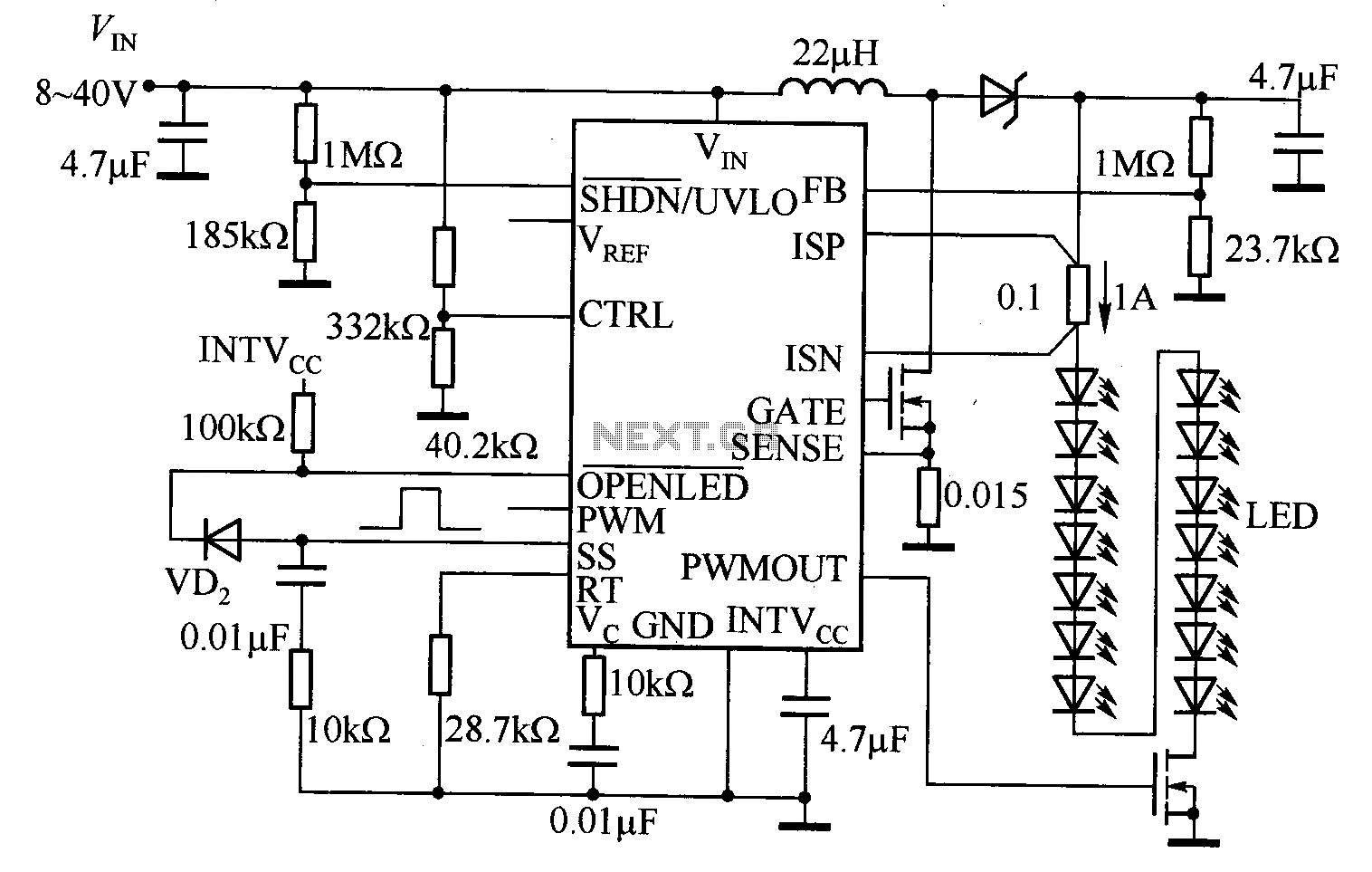
ADP3000 internal block diagram of an integrated circuit

The ADP3000 is an integrated circuit featuring a block diagram that illustrates its internal structure as a high-frequency switching regulator.
The ADP3000 integrated circuit is designed to provide efficient power management in various applications, particularly in systems requiring high-frequency switching capabilities. The internal block diagram typically includes several key components that work together to regulate voltage and current effectively.
At the core of the ADP3000 is a high-frequency pulse-width modulation (PWM) controller, which generates a control signal to drive the power switches. These power switches are usually implemented using MOSFET technology, allowing for rapid switching and minimal energy loss. The device also incorporates a feedback loop that monitors the output voltage, ensuring that it remains within specified limits by adjusting the PWM duty cycle.
Additionally, the ADP3000 may feature integrated compensation components, such as error amplifiers and compensation networks, which stabilize the control loop and enhance transient response. Protection features, including over-voltage protection (OVP), under-voltage lockout (UVLO), and thermal shutdown, are also integral to the design, ensuring the reliability and safety of the circuit during operation.
Input and output capacitors are typically included in the schematic to filter voltage spikes and provide stable operation. Furthermore, the block diagram may illustrate various pins for configuration and control, such as enable/disable functions, frequency selection, and soft-start capabilities, allowing designers to tailor the circuit's performance to specific application requirements.
The ADP3000 is well-suited for applications such as telecommunications, consumer electronics, and industrial power supplies, where high efficiency and compact design are critical. Its internal architecture exemplifies modern advancements in power management technology, making it a versatile choice for engineers seeking reliable and efficient solutions in their designs.ADP3000 internal block diagram of an integrated circuit It is a block diagram showing the internal structure of the high-frequency switching regulator IC ADP3000.
The ADP3000 integrated circuit is designed to provide efficient power management in various applications, particularly in systems requiring high-frequency switching capabilities. The internal block diagram typically includes several key components that work together to regulate voltage and current effectively.
At the core of the ADP3000 is a high-frequency pulse-width modulation (PWM) controller, which generates a control signal to drive the power switches. These power switches are usually implemented using MOSFET technology, allowing for rapid switching and minimal energy loss. The device also incorporates a feedback loop that monitors the output voltage, ensuring that it remains within specified limits by adjusting the PWM duty cycle.
Additionally, the ADP3000 may feature integrated compensation components, such as error amplifiers and compensation networks, which stabilize the control loop and enhance transient response. Protection features, including over-voltage protection (OVP), under-voltage lockout (UVLO), and thermal shutdown, are also integral to the design, ensuring the reliability and safety of the circuit during operation.
Input and output capacitors are typically included in the schematic to filter voltage spikes and provide stable operation. Furthermore, the block diagram may illustrate various pins for configuration and control, such as enable/disable functions, frequency selection, and soft-start capabilities, allowing designers to tailor the circuit's performance to specific application requirements.
The ADP3000 is well-suited for applications such as telecommunications, consumer electronics, and industrial power supplies, where high efficiency and compact design are critical. Its internal architecture exemplifies modern advancements in power management technology, making it a versatile choice for engineers seeking reliable and efficient solutions in their designs.ADP3000 internal block diagram of an integrated circuit It is a block diagram showing the internal structure of the high-frequency switching regulator IC ADP3000.





